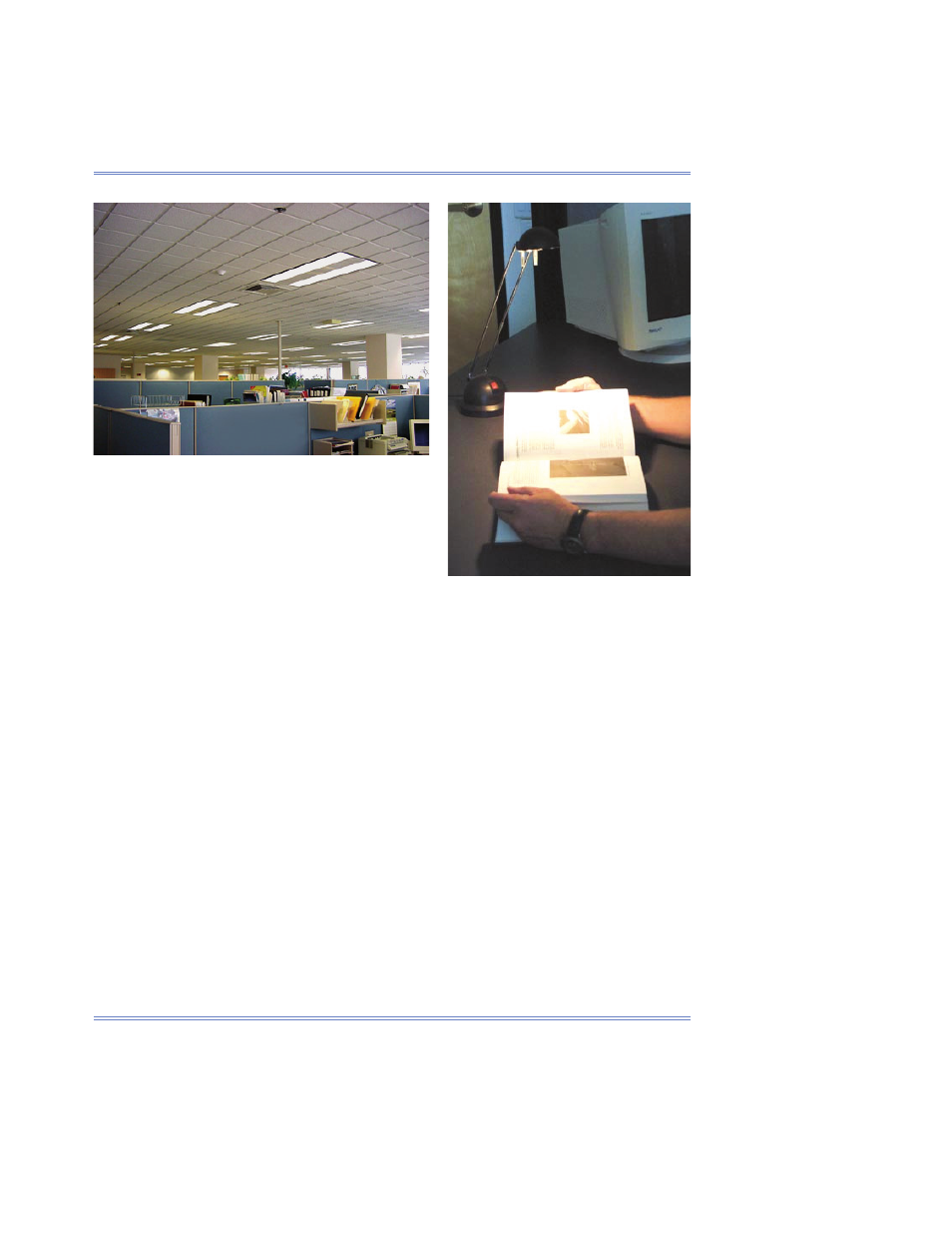Retrotec USACE User Manual
Page 227

Appendix D D97
D.5.12 Using High Levels of Ambient Lighting for Illuminating
Tasks Rather Than Using Task Lighting with Lowered Ambient
Lighting (Ineffi ciency)
Figure D153. Reduced ambient lighting. One lamp is
removed from each fi xture.
Figure D154. Reduced ambient lighting supplemented
by task lighting.
High levels of ambient lighting are unnecessary for performing visual tasks.
Rather, what is important for visual tasks is the amount of light just on the
task—not the ambient light in the room. A more effi cient alternative to high
levels of ambient lighting is to reduce ambient lighting below what would oth-
erwise be required to perform the task, and replace it with a task light (i.e., a
light that illuminates just the task and not the walls, the ceiling, or any other
object in the room other than the task). Reducing ambient lighting by de-
lamping a three-lamp fi xture by removing one lamp (Figure D153) can reduce
energy consumption by a third, and the task lighting (Figure D154) that would
add only a few watts for each individual cubicle.
Task lighting fi xtures can be undercabinet mounted or freestanding on the
desktop. Key decisions are how fl exible the fi xture is and what lamp technology
will be used. There are a number of compact fl uorescent tasks lights in both
undercabinet and freestanding confi gurations, and recent improvements in
LED technologies are producing very low-wattage task lights with good light
distribution and color.
D.5.13 Mercury Vapor Lamps and Ballasts (Ineffi ciency)
Replace mercury vapor lamps with metal halide lamps and ballasts (Figure
D155). The lamp manufacturers are phasing out production of mercury vapor
